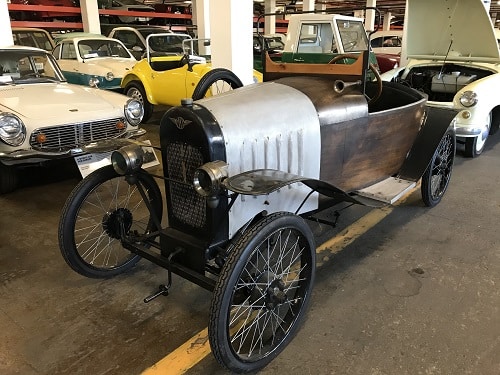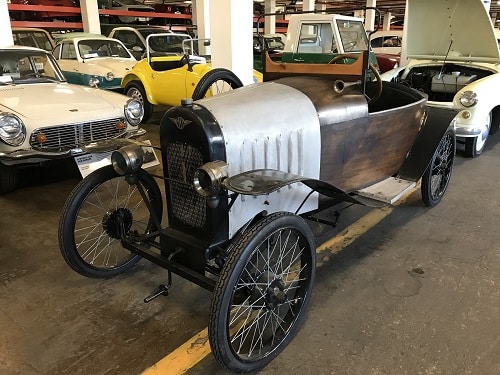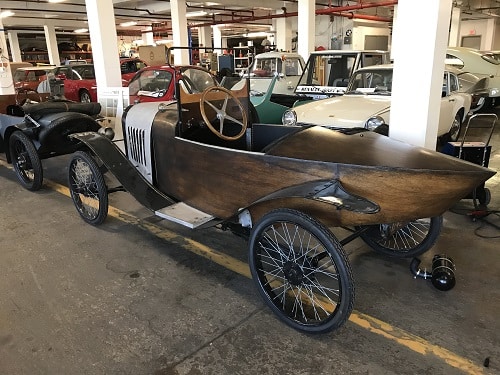
Mourlot et Cie Max Cyclecar- 1926

In 1926, Max Williams-Mourlot created “Mourlot & Cie” to manufacture small cyclecars. The company was established in Billancourt, France with hopes to fill the gap between the simplicity of a motorcycle and the size and complexity of a larger automobile.
The popular cyclecar of the early 1900s was an attempt to offer affordable cars. Cyclecars were lightweight and typically constructed from off-the-shelf motorcycle parts. They were assembled in small batches and scores of manufacturers proliferated throughout Europe. Because cyclecars were below a certain weight, licensing and taxing were at a reduced rate, further increasing their appeal. As simple as they were, clutches and variable gears were still a legal requirement. Compliance could be made by even the simplest devices such as the variable disc, friction drive seen on this Mourlot & Cie Max Cyclecar. Engine power is transferred to the drive wheels by means of a solid flat disk that engages a perpendicular wheel on the axel, without the use of toothed gears. The center of the disc is recessed where the wheel rests in a neutral position. A lever moves the wheel across the disc on its axle. From the slowest point near the center of the disc, the wheel is moved outward to make the car accelerate. A chain then drives the rear wheels. There is a clutch pedal that pulls the wheel from the disk, held there with a tension spring. Shifting the wheel to the opposite side of the disc takes the car into reverse, but has a stop so the car doesn’t go too fast!
Max Williams-Mourlot also produced a book: Pour Construire Soi-Même, Voiturettes à Pédales ou à Moteur, Side-Car, Cycle-Car, Petites Autos (Build Your Own Pedal or Motor Carts, Sidecar, Cycle-car, Small Economical Cars). It was published in 1947 as a practical guide, specifically for home-builders. Its pages were generously illustrated, which included measurements along with an abundance of practical tips. Among them are plans, ranging from trailers and sidecars to small gasoline-powered sportscars and pedal cars.
By the late 1920s larger manufacturers began making affordable cars that offered more than cyclecar companies and unfortunately, the Max could not compete.
Specifications:
Manufacturer: Mourlot & Cie
Country of Origin: France
Drivetrain Configuration: Front engine, rear wheel drive
Engine: Air-cooled, two-stroke, single-cylinder, 350cc
Transmission: Variable disc, friction drive
Top Speed: Unknown
Years of Production: 1927-1929
Number Produced: Unknown
Original Cost: Unknown

